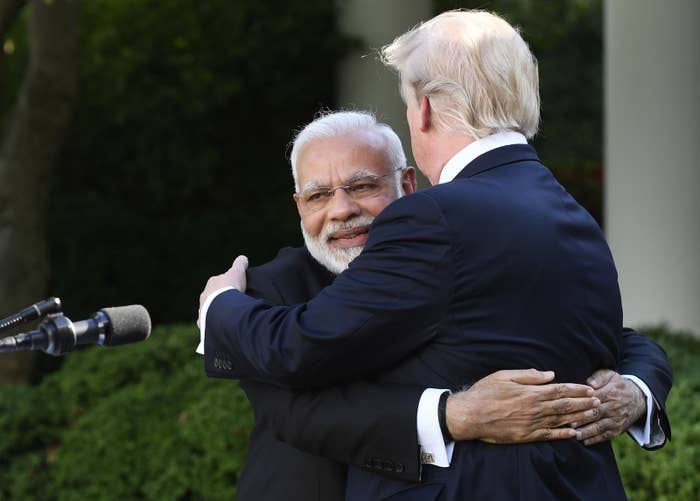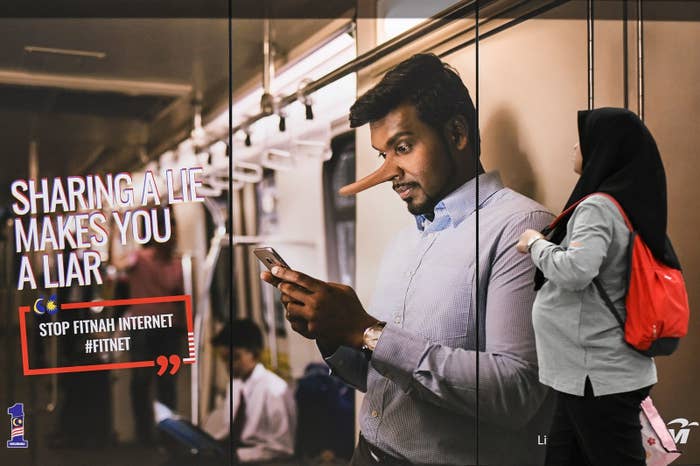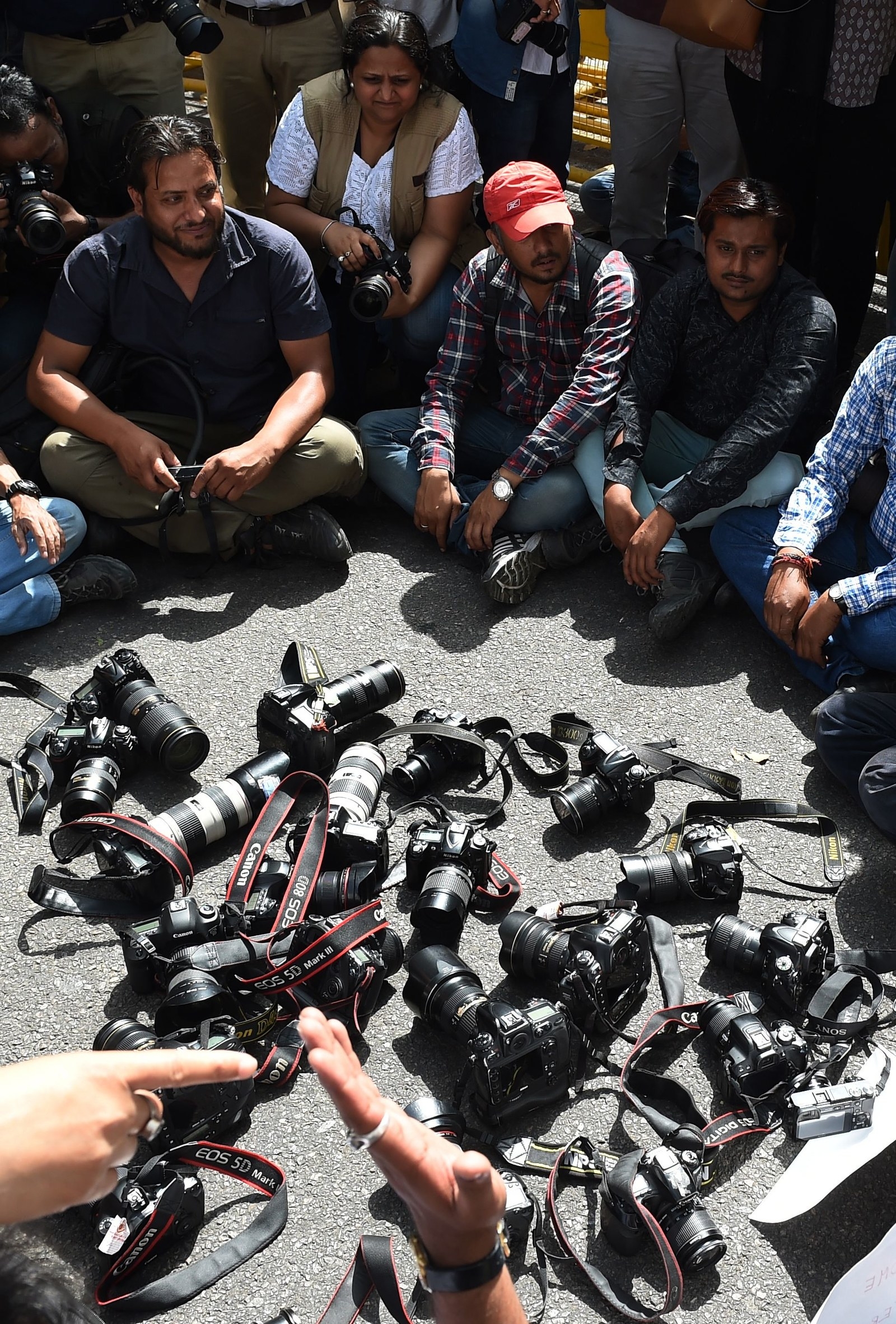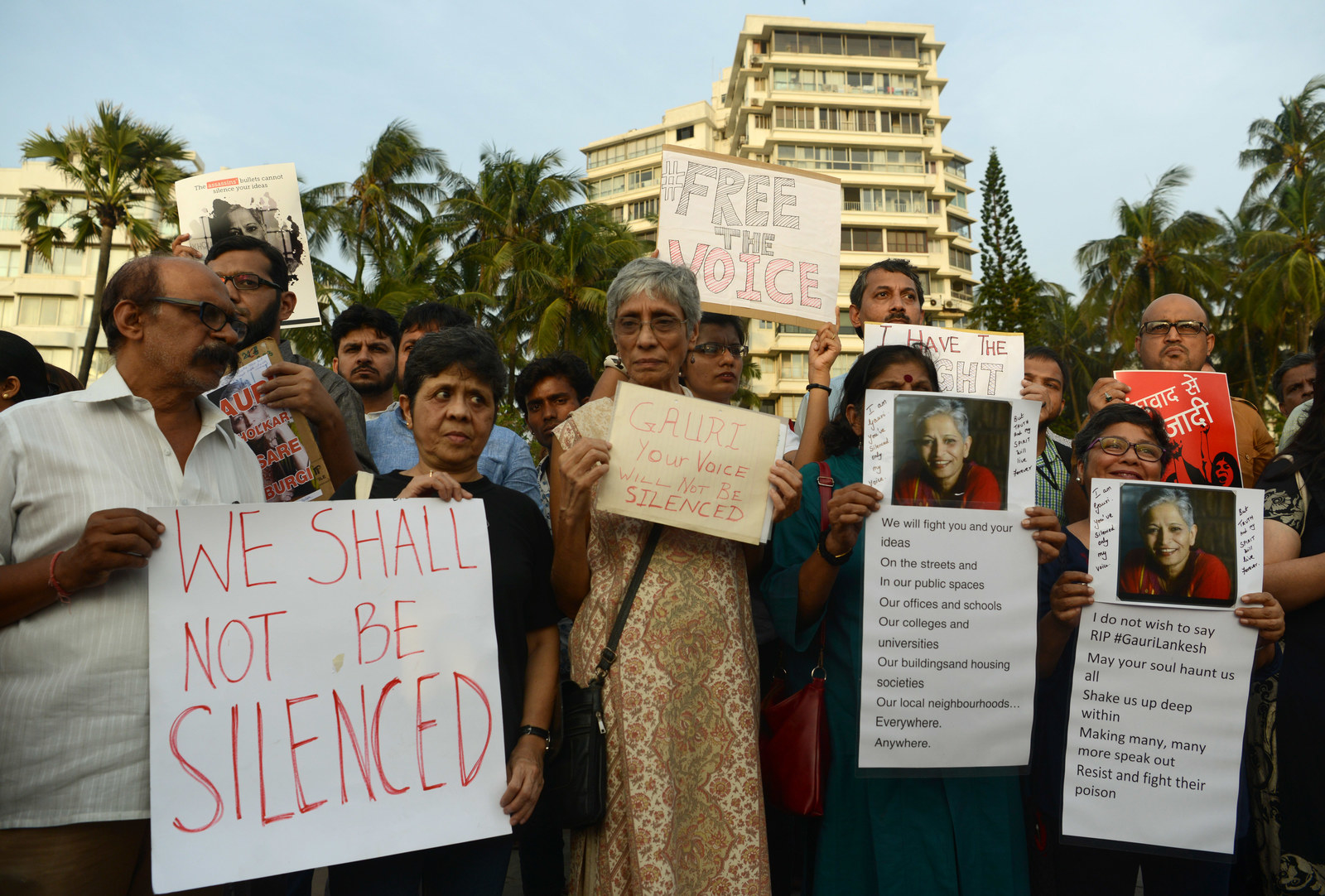
The Indian government announced it would crack down on so-called fake news by threatening to withdraw journalists’ official accreditation, but it withdrew the plan just a few hours later following complaints online.
The move was seen as an astonishing attack upon press freedom in a country where journalists are increasingly under siege — four journalists have been assaulted by police in March alone. The term "fake news has come to be used to describe any stories the government doesn’t like, and critics said steps to combat it were actually a way to gag journalists ahead of the 2019 general election.
India’s Information and Broadcasting Ministry unveiled the anti–fake news measures on Monday, but they were withdrawn by Prime Minister Narendra Modi’s office by noon on Tuesday. In the past few months, governments in both Singapore and Malaysia have proposed similar measures to crack down on fake news while limiting the freedom of the press. In Singapore, Human Rights Watch has criticized the parliamentary committee formed to deal with fake news, stating that the committee was simply a way for the government to silence its critics. Meanwhile in Malaysia, the government has passed a law despite opposition to make fake news punishable by a six-year prison sentence.

Under the measures proposed by the Indian government, anyone would be able to file a complaint against a journalist or organization suspected of spreading fake news. A complaint would mean that the journalist or organization could be suspended from publishing anything while under investigation for a period of 15 days. If found guilty, the journalist or organization would lose their accreditation for a period of six months for their first offense, one year at the second instance, and permanently lose their accreditation if they struck out a third time.
The Editors Guild of India said it remained deeply disturbed by the plans, even after they were dropped. In a statement, the Guild said that the decision on what was “fake news” and what wasn’t could not be left to governments since the government was often charged with spreading fake news itself. Rather than targeting mainstream news organizations, it was less traditional media platforms, which operate with fewer constraints, that had the potential to cause far more damage.
As a report in the Indian Express on April 3 pointed out, Information and Broadcasting Minister Smriti Irani, has been tweeting links to stories she described as “fake news” that were in fact stories backed by police complaints, evidence, and paper trails. The report indicated that rather than taking the issue of fake news — i.e., the deliberate spread of false information — seriously, the Indian government was delegitimizing thoroughly reported and backed-up stories that showed the government in a poor light, all under the guise of combating “fake news.”
“The release makes no mention of the unregulated reach of Facebook, WhatsApp, Google, and YouTube, which are what need to be tackled right now,” said Geeta Seshu, a consulting editor with the Hoot, a media watchdog organization. What worried Seshu the most, she added, was that the government was ignoring “real news” under the pretext of combating fake news.
Last week for instance, Mahesh Vikram Hegde, the cofounder of a right-wing fake news website called Postcard News who is followed on Twitter by Modi, was arrested for “spreading communal disharmony” through a fake news story. Hegde had claimed through Postcard News and his social media that a Muslim man had attacked a Jain monk from Kerala, adding that “no one was safe” from communal violence in Congress-ruled Karnataka, not even Jain monks — who belong to one of the most nonviolent sects on earth. In fact, police reports later proved that the monk had been hit by a bike while walking on the road.
“The crisis of fake news in India has little to do with accredited journalists from mainstream organizations,” Seshu said.
Platforms like WhatsApp, which has more than 200 million users in the country, have enabled rumors, hoaxes, and misinformation to spread more rapidly than ever before. India is expected to hit 450 million internet users by June 2018 according to the Internet and Mobile Association of India, a telecoms industry lobby. Over half of the country’s internet-connected population uses Facebook Messenger, which is difficult to police due to its end-to-end encryption.
The growing use of social media and the fact that India — the world’s largest democracy — is gearing up for major national elections in 2019 and several key state elections in 2018 has also caused to country’s media environment to become increasingly polarized. This has in turn led to the rise of independent, grassroots fact-checking organizations like Boom Live, Social Media Hoax Slayer, Alt News, and Check4Spam, a WhatsApp-based hoax busting hotline, over the last few years.

The Indian press meanwhile is under siege. According to a report in 2017 by Reporters Without Borders, India fell from 133 to 136 on the World Press Freedom Index of 180 countries. Another report by the same organization took note of the recent surge in police violence against reporters in 2018 — there have been four separate instances of journalists being assaulted and detained in March alone.
On March 8, a photojournalist in New Delhi was beaten and detained by police officers while covering a local traders protest. Two days later, seven journalists were "lathi-charged," or beaten by police batons while covering a student demonstration, in the northeastern state of Assam. On March 23 a reporter was molested and assaulted by officers of the Delhi police while covering a student protest in the city, and on March 25 a reporter from the southwestern state of Kerala was beaten by the police and locked in a cell while on assignment.
Several Indian journalists said that Modi ordered the press release to be withdrawn because of the outrage with which it had been greeted, but this seems unlikely. In the past Modi's government has been unresponsive in the face of far greater outrage, ignoring nationwide sit-ins, angry editorials, and blank front pages in newspapers protesting the murder of journalist Gauri Lankesh.

The issue of press accreditation is a tricky one in India. Accreditation was important for a generation of journalists that relied solely on access to government officials, political parties, and traveling with the prime minister as part of the press entourage for news stories. However, as journalists in legacy news organizations as well as a multitude of news websites rely increasingly on official and unofficial leaks and sources that are online as much as within government offices, the need for such accreditation is arguably less important.
Government-approved accreditation also opens journalists up to further governmental scrutiny. In its eight-page accreditation form, the Press Information Bureau asks journalists to include details of their marital status, which gender they identify as, all the places they have lived for the past five years, how much they earn, the number of page views their websites get (in the case of online news organizations), and the amount of revenue the website generates annually. Freelance journalists are required to have at least 15 years of experience to qualify.


